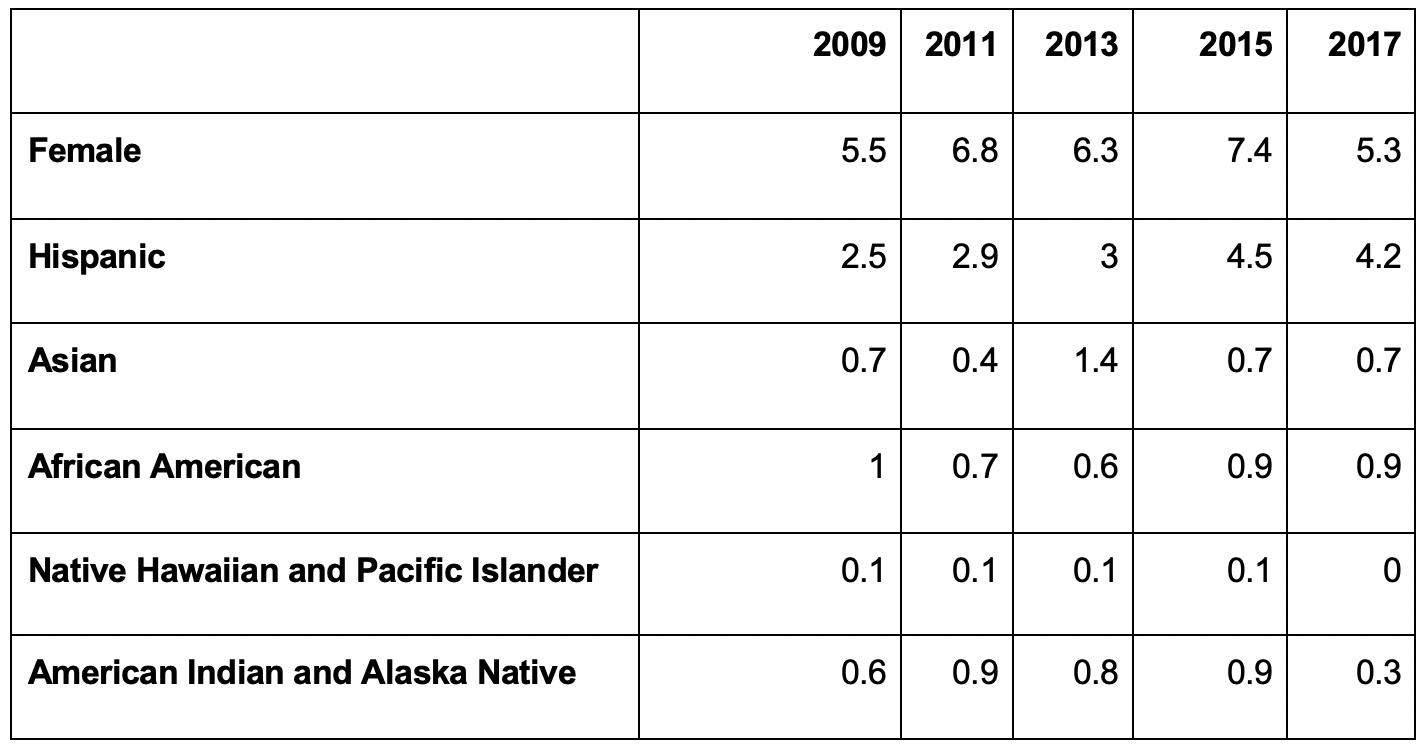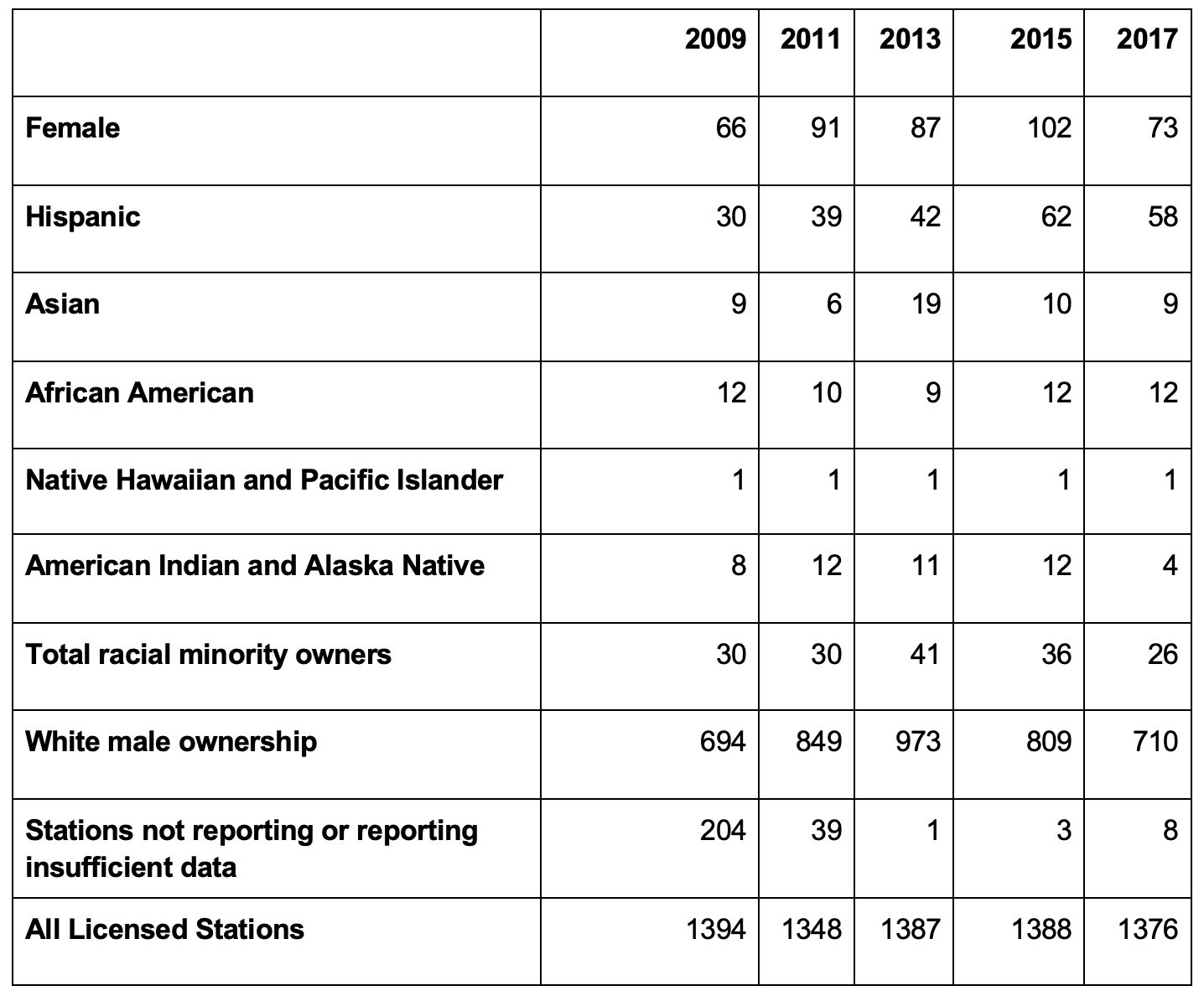The Abysmal State of Media Ownership Diversity in America
This term, the U.S. Supreme Court will consider a case that The Leadership Conference on Civil and Human Rights is watching closely because of the powerful role broadcasting plays in the democratic process as well as in shaping perceptions about who we are. Our coalition has long regarded expanding minority and female ownership in broadcasting as an important goal because meaningful protection of civil rights and advancement of key policy objectives rely in great measure on an accurate, diverse, and independent media that serves the constituencies we represent.
Federal Communications Commission v. Prometheus Radio Project addresses the important question of whether the Federal Communications Commission (FCC) properly concluded that media consolidation would not harm its longstanding public interest goal of promoting ownership by women and people of color in broadcasting. The Court will review the U.S. Court of Appeals for the Third Circuit’s decision that reversed the FCC’s most recent ruling on the agency’s broadcast ownership rules. The Third Circuit has held multiple times that the FCC cannot relax ownership rules without analyzing the impact of that action on ownership rates by women and people of color — given already dismally low ownership rates.
Access to the media by the broadest sector of society is crucial to ensuring that diverse viewpoints are presented to the American people, but racial and gender disparities in media ownership that date back to the beginning of the civil rights era continue to persist. Diverse voices in the media landscape help to ensure that diverse topics and perspectives are presented to counter disinformation and misinformation. At a time when more people, particularly Black people, are distrustful of the media, diversity in media ownership has become more important than ever for the functioning of our democracy. Diversity in ownership is part of that solution. Research has shown that Americans still prefer to watch the news on television over reading the news. Moreover, more than 90 percent of Americans still listen to the radio each week. For that reason, The Leadership Conference has long urged the FCC to collect, study, and analyze accurate ownership data for TV and radio.
The FCC’s consideration of its broadcast ownership data is a key issue raised in the Prometheus case. However, the FCC’s ownership reports are difficult to find and read and the FCC’s public facing database verges on unusable to track ownership statistics, Accordingly, The Leadership Conference has compiled the topline data from the FCC’s four ownership reports to highlight key flaws in that data.
For full power commercial television, the data show the following ownership percentages:

To put this in perspective, in 2017 (the year of the latest data released by the FCC) these groups represented the following percentages of the U.S. population, according to census data:

Hispanic people control 4.2 percent of television stations but represent 17.6 percent of the U.S. population, while African Americans control 0.9 percent of television stations but represent 13.9 percent of the population. In all cases, except for Hispanics, the numbers are worse in 2017 than they were in 2009.
Though the most recent full power television data is complete, close to 20 percent of AM and FM stations consistently did not report ownership data from 2009 through 2017, and more than a third of low power TV stations did not provide ownership data during that same time period. This means that in those services, the FCC’s numbers are inaccurate because the commission calculates its percentages based only on the stations reporting, leaving out thousands of stations from the denominator. Thus, most of the FCC’s percentages understate the problem.
FM radio is important because the FCC considers radio an entry point for women and people of color. For FM radio, there are more missing stations than there are total stations controlled by women or people of color, as the data show:

The FCC’s report reveals that, in 2017, 1,248 stations of the total 6,647 stations did not report or reported data the FCC could not use to identify the station’s ownership status. In the same year, women owned 390 total stations, Hispanics owned 219 stations, African Americans owned 114 stations, and Asian, Native and Pacific Islander, and Native ownership collectively owned 44 stations. We do not know the ownership of the non-reporting stations and the FCC does not know if stations owned by women or people of color failed to report in any given year. Thus, we do not know if the trends in these charts are accurate. For example, female ownership in the 2017 data is dramatically lower in every service but AM radio, while the changes in ownership by people of color is more varied. Why?
The data does not have to be this unreliable, as The Leadership Conference explained in our comments to the FCC last year. Because the data is submitted by FCC licensees and the FCC maintains complete databases of all transactions, the FCC could improve that data if it chose to do so. Moreover, the FCC has failed to enforce its rules to require licensees to complete mandatory biennial filings. The commission has repeatedly failed to make improvements to its internal tracking so that it can monitor changes over time. As The Leadership Conference has explained, “A commitment to promoting diverse media ownership is a fundamental component of the nation’s communications policy. In order to make progress on media ownership diversity and diversity in employment, the FCC must collect and utilize accurate and complete data and conduct sophisticated, not slipshod, analysis.”
Broadcast consolidation has driven out women and people of color from the ranks of broadcast owners, decreasing their influence on the news covered and the people employed. The FCC has long blamed its failure to improve ownership diversity on the lack of quality data. In the case before the Supreme Court, the FCC relied on a flawed analysis of unreliable data and blamed the public for failing to produce studies even though the FCC has maintained an unreliable ownership diversity data set for many years. The FCC’s failures to collect, study, and analyze accurate ownership data for TV and radio mean it cannot track the problem it seeks to solve and calls into question how seriously the FCC takes the issue. These failures, which have occurred across Democratic and Republican administrations, must end with an immediate effort to study and consider how the FCC can increase participation by all people in our nation’s communications infrastructure. For this reason, the Third Circuit’s ruling to reverse the FCC’s decision should be upheld.